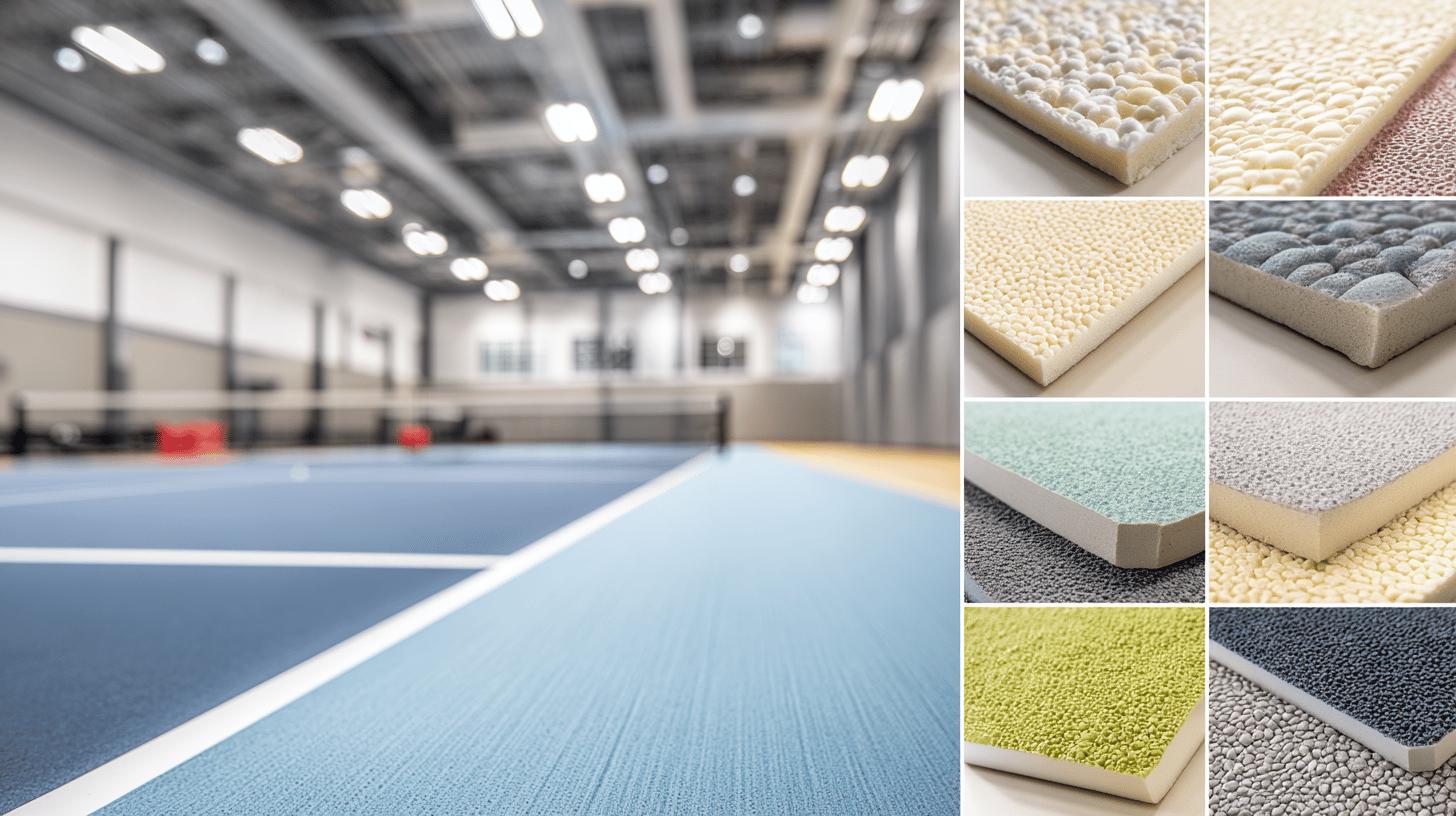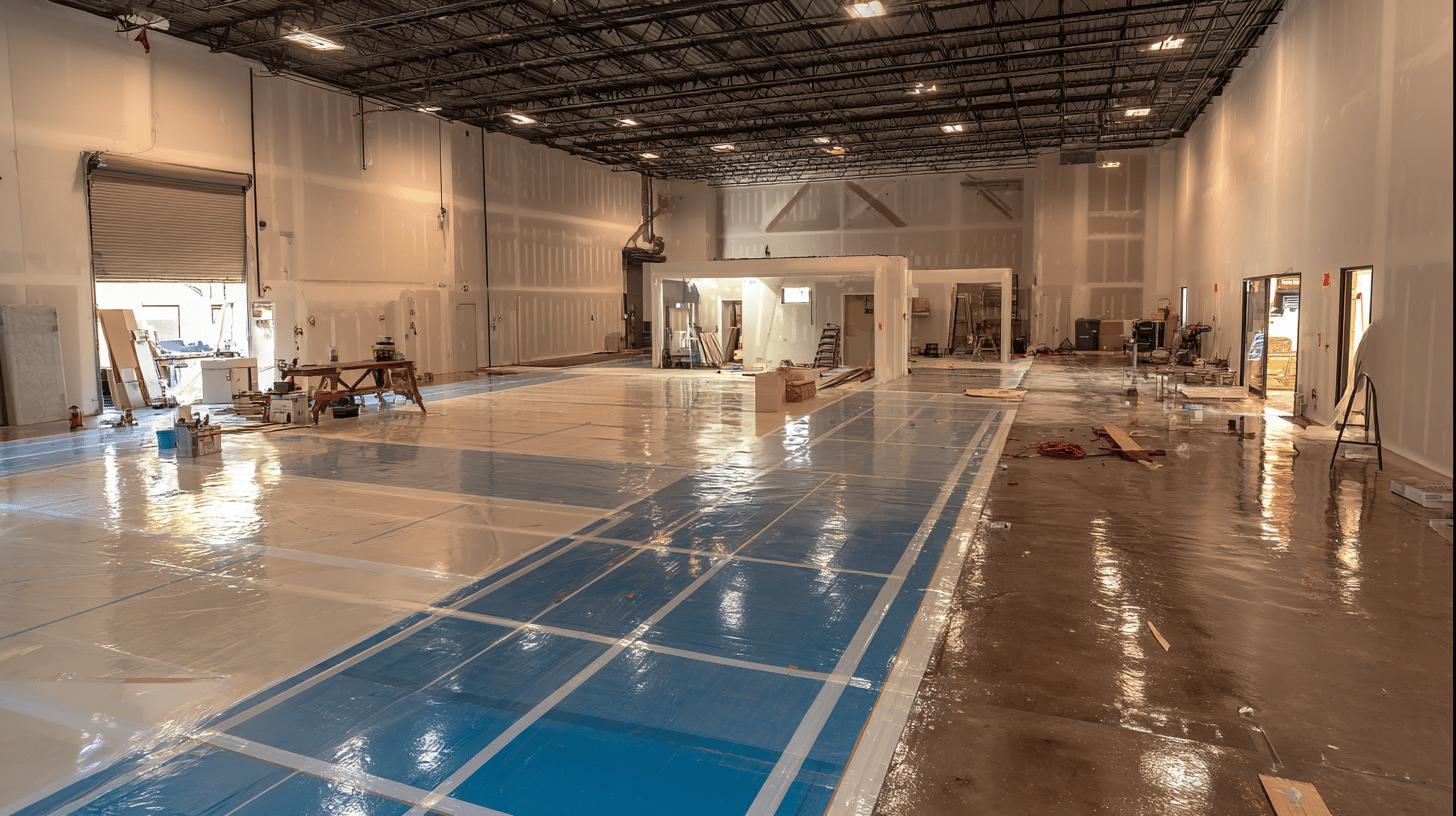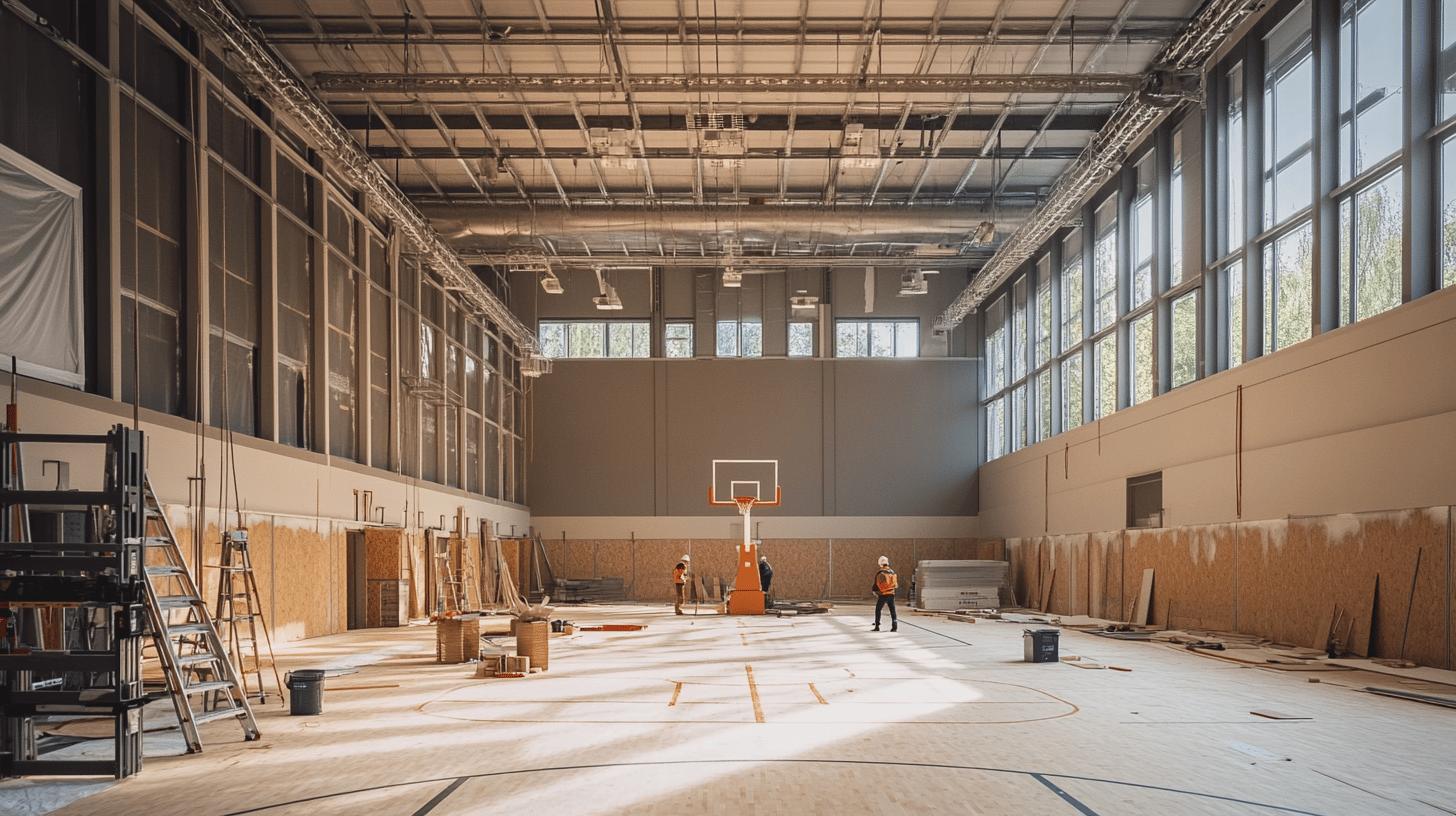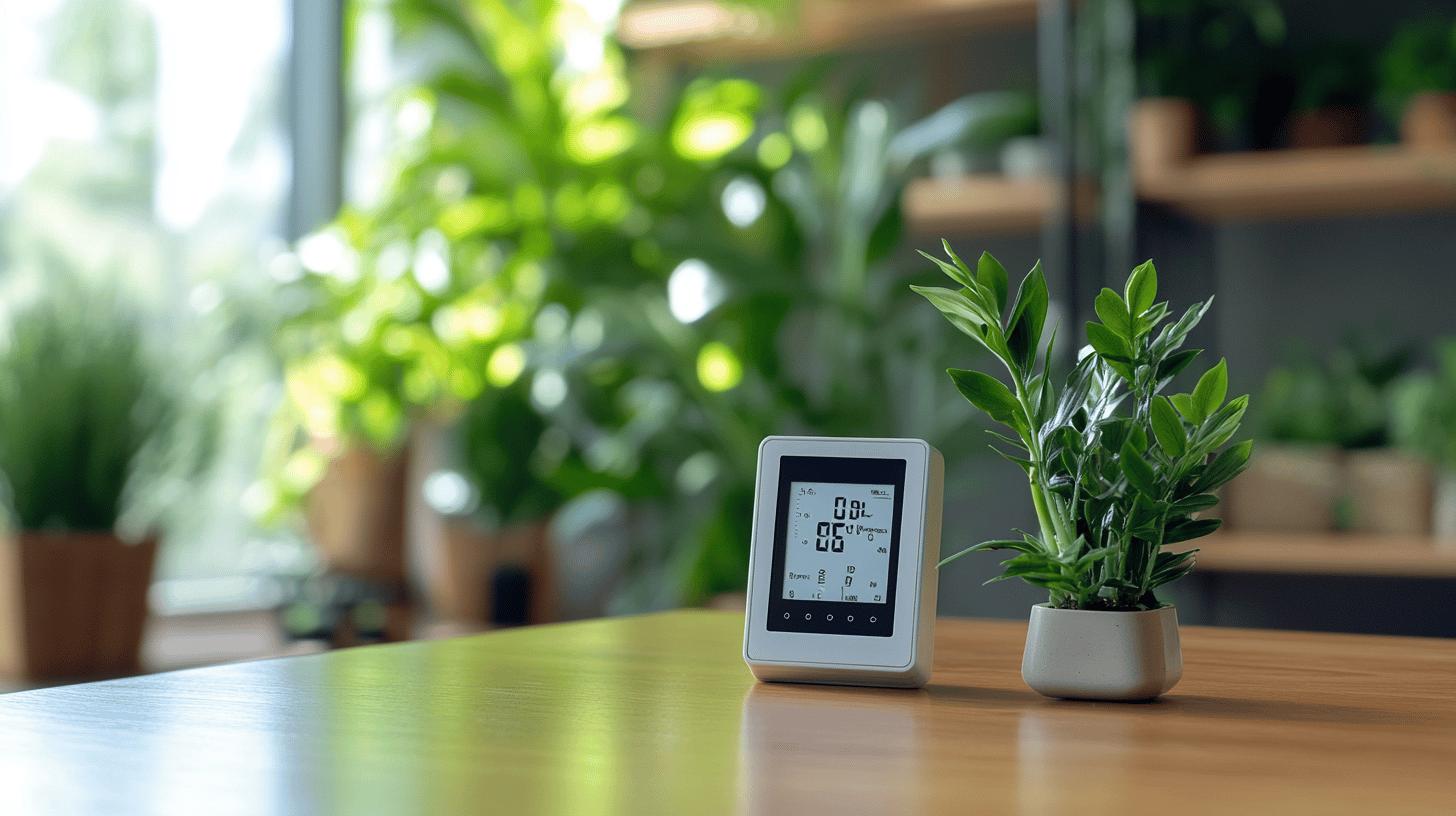Is pickleball the new tennis, or merely a passing fad? As this sport continues to captivate a global audience, its popularity surge seems to indicate a shift in indoor sports preferences, putting venues under pressure to keep pace. The rise of pickleball is not just due to its hybrid charm, mixing elements of tennis, badminton, and ping-pong, but also its accessibility and social appeal, drawing diverse players from around the world. With court construction rapidly increasing, it’s vital to ensure that the selected indoor surface caters to optimal playing conditions and safety standards.
Understanding the Pickleball Popularity Surge
Pickleball’s rapid ascent as a popular sport can be attributed to its accessibility and social appeal. It combines elements of tennis, badminton, and ping-pong, making it easy to learn and enjoyable for people of all ages and skill levels. The sport’s social nature encourages interaction and community-building, as players often form groups and leagues, fostering camaraderie and regular participation. The low cost of equipment and the minimal space required for play have also contributed to its widespread adoption, particularly in urban areas where space can be limited.
The growth trajectory of pickleball is remarkable, with the sport consistently ranking as America’s fastest-growing for four consecutive years. According to recent statistics, the number of players has surged, leading to an increase in demand for indoor and outdoor courts. This boom has prompted the construction of new facilities at schools, parks, and community centres, enabling more people to engage in the sport. The spread of pickleball is not limited to the United States; it is gaining traction globally, attracting a diverse range of participants and fostering a vibrant international community.
Looking ahead, projections indicate that pickleball’s growth will persist well beyond 2030. As communities recognise the sport’s benefits in promoting physical activity and social interaction, investments in court infrastructure are expected to rise. This growth will likely have a lasting impact on local communities by enhancing public health and providing venues for social events and tournaments. Pickleball’s continued expansion represents a valuable opportunity for fostering community engagement and improving quality of life through accessible and enjoyable physical activity.
Exploring Indoor Surfaces for Pickleball Courts
The demand for indoor pickleball courts has surged as players seek environments offering consistent play and protection from weather elements. Indoor courts provide a controlled setting, essential for maintaining the quality of play and player safety. Choosing the right indoor surface is crucial as it influences gameplay, player comfort, and long-term maintenance needs. With indoor sports hall surfaces varying significantly, understanding the advantages of each option can guide facility owners and players in making informed decisions.
Hardwood surfaces are a preferred choice for many pickleball courts due to their excellent ball bounce and professional feel. These courts replicate the conditions found in competitive settings, making them ideal for serious players. Moreover, hardwood is renowned for its durability, often lasting decades with proper maintenance. However, the initial installation cost can be significant, and regular upkeep is necessary to preserve its condition.
Rubber surfaces offer a different set of benefits, particularly appealing for players with joint concerns. The cushioning effect of rubber reduces the impact on joints, providing a softer playing experience. While rubber may not offer the same ball bounce as hardwood, its comfort and injury prevention advantages make it suitable for recreational facilities and venues catering to diverse age groups. Additionally, rubber surfaces are relatively easy to clean and maintain, further enhancing their appeal.
Polypropylene tiles present a budget-friendly and versatile alternative for indoor pickleball courts. These tiles are affordable, easy to install, and require minimal maintenance, making them an attractive option for venues with limited resources. Offering good traction, polypropylene tiles enhance player safety, although they may not provide the same professional feel as hardwood. Their modular nature allows for customisation, enabling facility owners to adjust layouts as needed.
- Hardwood:
- Provides excellent ball bounce and a professional feel.
- Ideal for serious and competitive players.
- Requires significant initial investment and regular maintenance.
- Rubber:
- Offers cushioning, reducing joint impact.
- Suitable for players with joint concerns or mixed-age groups.
- Easier to clean and maintain than hardwood.
- Polypropylene:
- Budget-friendly and easy to install.
- Requires minimal maintenance.
- Offers good traction but may lack the professional feel of hardwood.
.
Factors to Consider When Choosing the Right Indoor Surface

The selection of an appropriate indoor surface is pivotal in determining both gameplay quality and player safety in pickleball. The surface material directly impacts how the ball interacts with the court, influencing the speed, bounce, and overall fluidity of play. Safety concerns also arise from surface traction, as inadequate grip can lead to slips and falls, thus potentially causing injuries. Furthermore, the choice of surface affects ongoing maintenance requirements, which can vary significantly depending on the material used. Therefore, making an informed choice is essential not only for player performance but also for ensuring a safe and sustainable playing environment.
1. Traction:
- Ensures player safety by preventing slips.
- Affects how players can move and stop quickly.
2. Durability:
- Determines the lifespan and maintenance needs of the court.
- Influences long-term costs and surface performance.
3. Player Comfort:
- Impacts joint stress and overall playing experience.
- Essential for venues catering to diverse age groups and skill levels.
.
Selecting the right indoor surface also requires considering the specific needs of different venues or player skill levels. For competitive environments, surfaces like hardwood may be preferred for their professional feel and superior ball bounce. In contrast, community centres or recreational facilities might prioritise rubber for its cushioning properties, offering greater comfort and reducing joint impact. Polypropylene tiles could be a viable option for budget-conscious venues, providing a balance between affordability and adequate performance. Tailoring these choices to the specific context ensures optimal playing conditions and player satisfaction.
Comparing PU, Vinyl, and Sealed Timber for Pickleball
Selecting the ideal indoor surface for pickleball is integral to achieving optimal gameplay and player satisfaction. The choice of surface material directly impacts ball bounce, durability, and player comfort, which are crucial factors for both recreational and competitive play. Understanding the characteristics and benefits of different court flooring options enables facility owners and planners to make informed decisions that align with their specific requirements and budget constraints.
PU (Polyurethane) surfaces are a popular choice for many indoor sports facilities due to their versatility and performance characteristics. PU floors are known for providing a consistent ball bounce, making them suitable for serious pickleball players seeking a professional playing experience. Additionally, these surfaces offer excellent durability, resistant to wear and tear, which is essential for high-traffic areas. Player comfort is enhanced by the slight cushioning effect of PU floors, reducing joint stress and allowing for prolonged play without discomfort.
Vinyl flooring offers a more budget-friendly alternative while still delivering satisfactory performance for pickleball courts. Vinyl surfaces are relatively easy to maintain and are resistant to scuffs and stains. They provide moderate ball bounce, acceptable for recreational play and community settings. However, vinyl may not offer the same level of durability or professional feel as PU or sealed timber. Despite this, vinyl floors are a practical choice for venues prioritising cost-effectiveness and ease of installation.
Sealed timber surfaces are often considered the gold standard for indoor pickleball courts, particularly in competitive environments. The natural wood finish provides a superior ball bounce and a classic aesthetic that appeals to players and spectators alike. Timber floors are highly durable, especially when properly maintained through regular sealing and refinishing. While sealed timber offers exceptional player comfort, the initial installation and ongoing maintenance costs can be significant, making it a premium option for facilities seeking to offer a top-tier playing experience.
| Surface Type | Ball Bounce | Durability | Player Comfort |
|---|---|---|---|
| PU | Consistent | High | Good |
| Vinyl | Moderate | Moderate | Acceptable |
| Sealed Timber | Superior | High | Excellent |
In summary, each surface type—PU, vinyl, and sealed timber—offers distinct advantages and considerations for indoor pickleball courts. PU combines consistent performance with durability and comfort, making it a versatile choice. Vinyl provides a cost-effective solution with easy maintenance, suitable for less demanding environments. Sealed timber stands out for its superior performance and aesthetic appeal, ideal for high-end venues. By evaluating the specific needs of the facility and its users, decision-makers can select the most suitable court flooring option to enhance the pickleball experience.
Maintenance and Longevity of Indoor Pickleball Surfaces
Regular maintenance is crucial in extending the life of indoor pickleball surfaces, as it ensures optimal playing conditions and reduces the risk of surface wear and tear. Selecting the right materials during installation is the first step towards achieving long-lasting performance. However, without proper upkeep, even the most durable surfaces can deteriorate prematurely, resulting in increased costs and disruptions to gameplay. Facility owners and players must prioritise maintenance to protect their investment and sustain the quality of the court.
- Regular Cleaning:
- Remove dirt and debris to prevent surface abrasion.
- Use appropriate cleaning agents to maintain surface integrity.
- Timely Repairs:
- Address minor damages promptly to prevent further deterioration.
- Seal cracks and gaps to maintain player safety and court performance.
- Routine Inspections:
- Conduct regular checks for signs of wear and tear.
- Schedule professional assessments to ensure structural integrity.
- Environmental Control:
- Manage humidity and temperature to prevent material degradation.
- Ensure proper ventilation to minimise moisture build-up.
.
Proper maintenance not only prolongs the longevity of pickleball courts but also offers substantial benefits to communities and campuses. Well-maintained courts provide a safe and enjoyable environment for players, encouraging regular participation and fostering community engagement. Facilities that invest in regular upkeep can host more events and attract a diverse range of users, enhancing their reputation and making them more appealing to potential sponsors. Ultimately, maintaining indoor pickleball surfaces is an investment in the sport’s future, promoting health, wellness, and social interaction within the community.
Installation Costs and Budget Considerations

When building an indoor pickleball court, several key factors influence the installation costs. These include space requirements, flooring materials, lighting, and soundproofing. Basic setups typically range from $10,000 to $25,000, while premium facilities can exceed $50,000. The court surface choice significantly impacts costs due to material expenses and preparation needs. Luxury surfaces such as sealed timber may require higher initial investment and specialised installation techniques. On the other hand, cost-effective options like polypropylene tiles can offer affordability with easier installation and maintenance.
Budgeting Tips:
- Opt for multi-purpose court designs to maximise space efficiency and reduce costs.
- Prioritise essential features first, such as flooring and lighting, and consider phased upgrades.
- Explore supplier discounts or bulk purchasing to lower material costs.
.
Different surface choices can substantially impact overall expenditure when planning a pickleball court. For instance, hardwood surfaces, favoured for their professional feel, may demand higher upfront costs and maintenance. Conversely, vinyl or rubber surfaces can offer a more budget-friendly solution while still delivering satisfactory performance. Facility owners need to balance the initial investment with the long-term benefits and maintenance requirements of each surface type, ensuring that their choice aligns with both budgetary constraints and the intended use of the facility.
Final Words
As the Pickleball popularity surge continues, selecting the right indoor surface becomes crucial for providing optimal play. Various surface options such as hardwood, rubber, and polypropylene cater to different needs, offering benefits in traction, durability, and comfort. Choosing the appropriate material impacts gameplay quality, safety, and maintenance in a sport experiencing significant growth. By considering factors like installation costs, maintenance, and player needs, facility owners can ensure a lasting investment. Embracing these insights, venues can enhance their offerings, supporting pickleball’s rise in popularity and ensuring a robust court experience.
The Role of Traction in Athlete Safety and Success
Specify pickleball lines → Sports Hall Markings
FAQ
What is the best surface for an indoor pickleball court?
The best surface for an indoor pickleball court depends on player preference and usage. Popular options include:
- Hardwood: Offers excellent ball bounce and a professional feel.
- Rubber: Provides cushioning, reducing joint impact.
- Polypropylene tiles: Offer good traction, affordability, and easy maintenance.
.
Why is pickleball suddenly so popular?
Pickleball’s popularity surge can be attributed to its accessibility, engaging social aspects, and versatility. It combines elements from tennis, badminton, and ping-pong, drawing a diverse range of players across various skill levels.
Why is pickleball increasing in popularity in the UK?
Pickleball is increasing in popularity in the UK due to its ease of learning and appeal to all ages. The sport provides inclusive social engagement and is suitable for indoor and outdoor play, enhancing its growth momentum.


